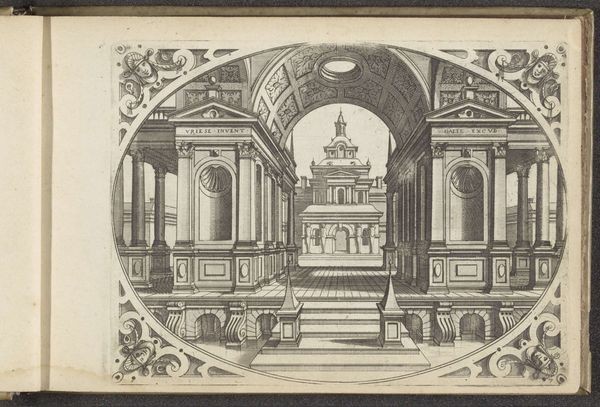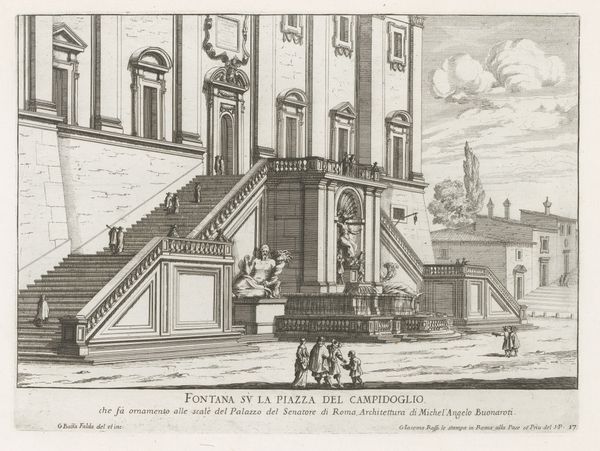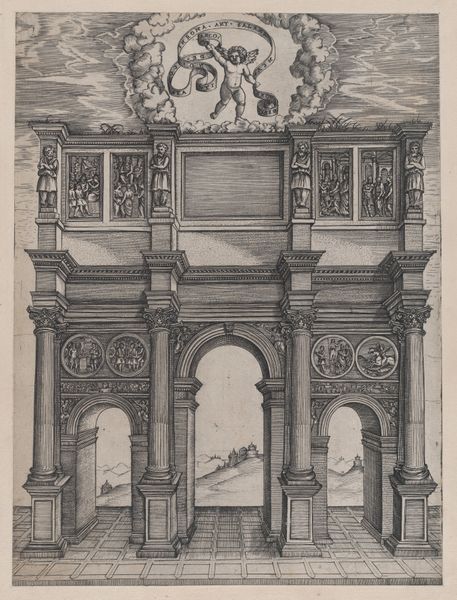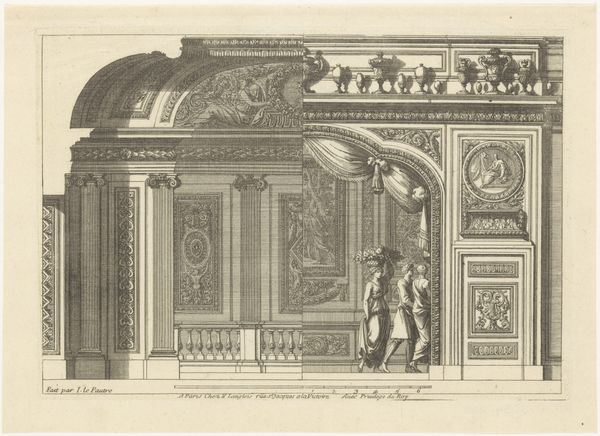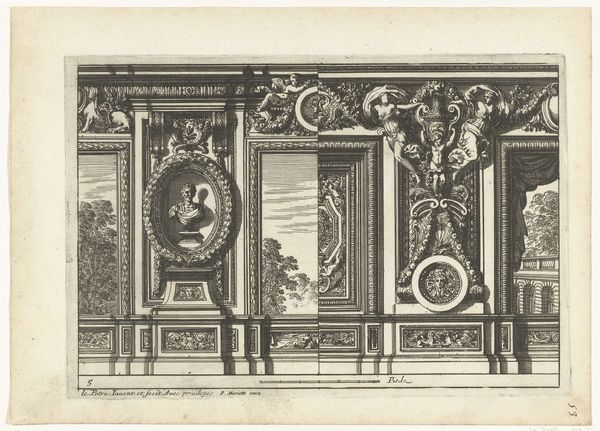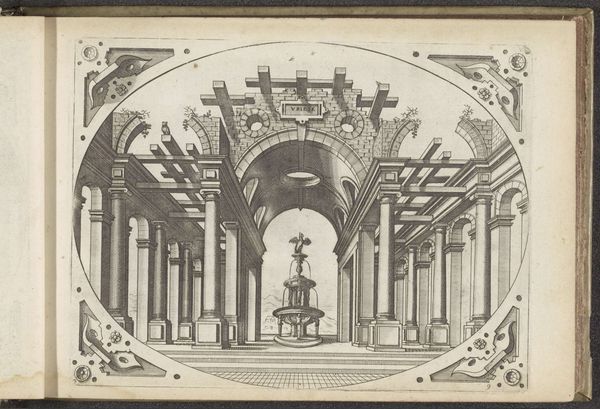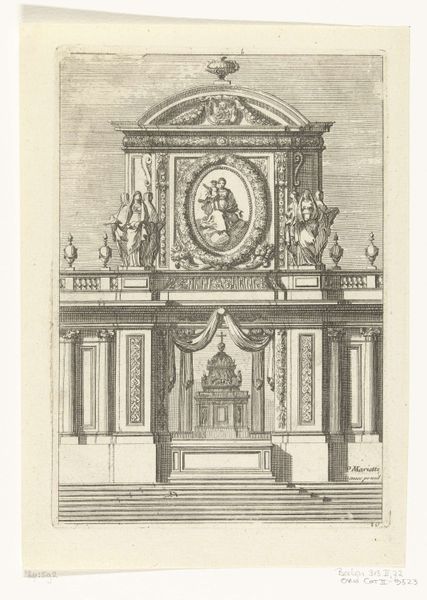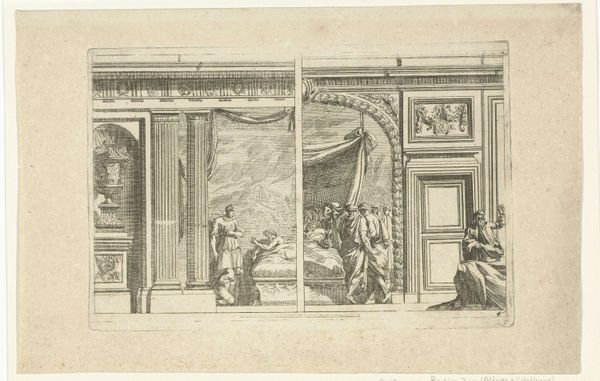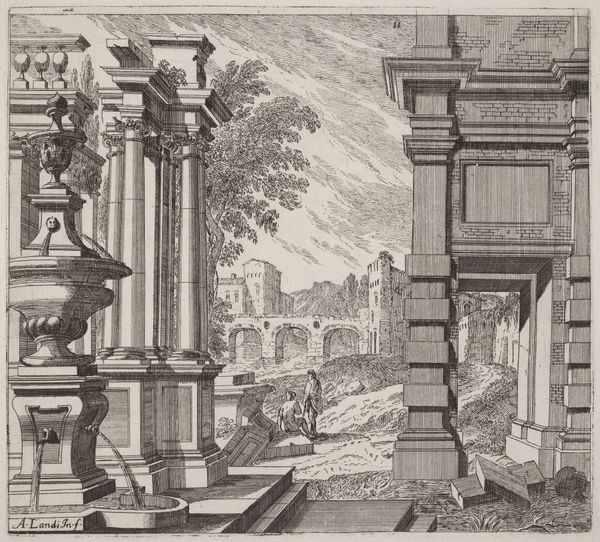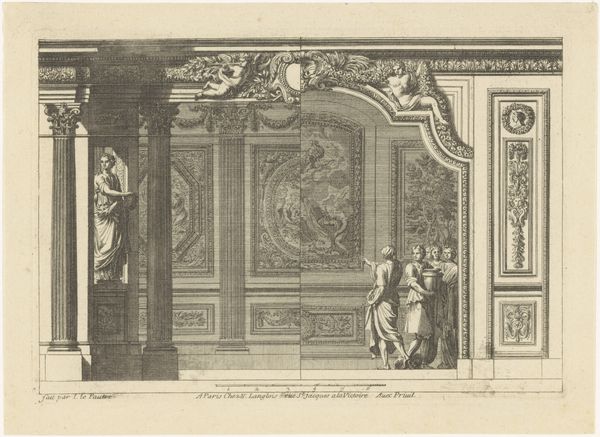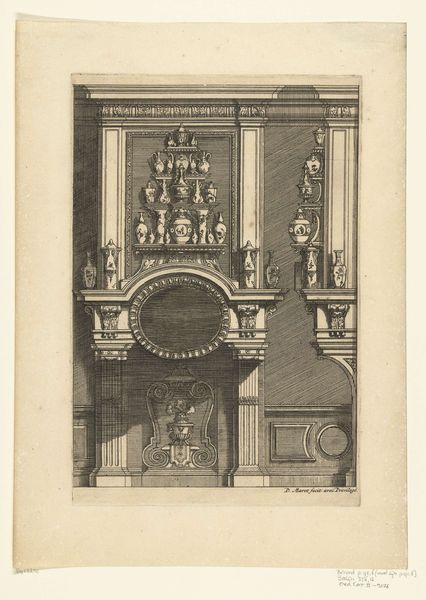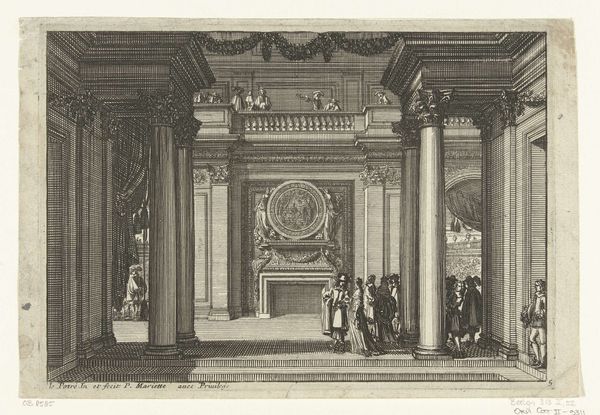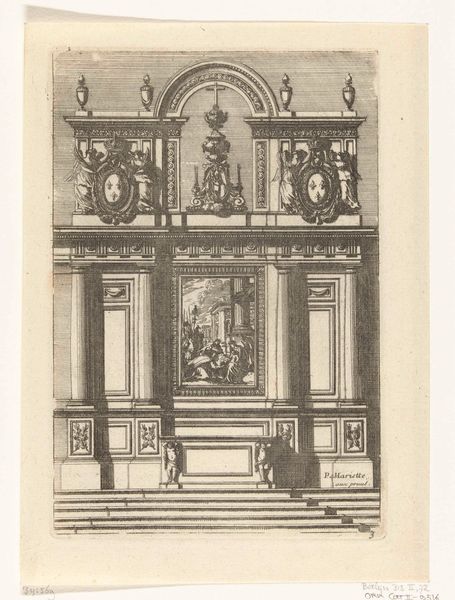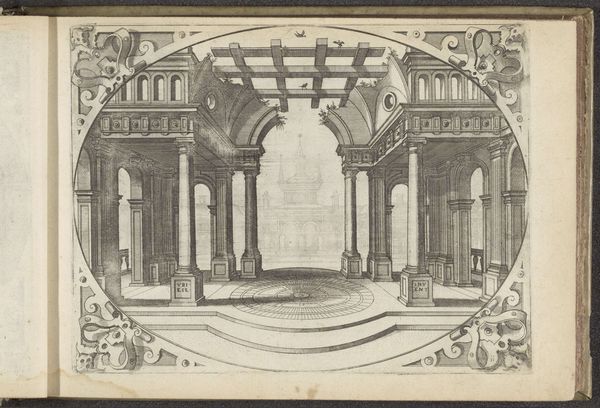
print, etching, engraving, architecture
#
baroque
# print
#
etching
#
old engraving style
#
landscape
#
cityscape
#
engraving
#
architecture
Dimensions: height 80 mm, width 142 mm
Copyright: Rijks Museum: Open Domain
Curator: Before us, we have "Fontana della Dea op het Capitool te Rome," or "Fountain of the Goddess on the Capitol in Rome" by Jacobus Baptist, dating back to 1729. This work, held at the Rijksmuseum, is a print rendered in engraving and etching. What's your initial take? Editor: It's like stepping into a dream of Roman grandeur! The architecture is breathtaking, even in monochrome. I'm drawn to the tiny figures; they lend a sense of scale and human presence to such a monumental scene. There is such crisp precision to the engraving. Curator: Precisely. The baroque style here echoes Rome's architectural ambition and spiritual heart of the era. Notice how the fountain acts as a conduit, a point of visual intersection between the earthly figures below and the divine symbolized above in the statuary. The play of water, sadly absent here, reinforces the city's lifeblood. Editor: Water as lifeblood. Absolutely. It is such a theatrical stage here, isn’t it? It almost makes you feel like something significant should be occurring. What goddess do you think is being represented here? Is it a generalized figure, or something specifically Roman? Curator: It would have likely represented Minerva, the Roman goddess of wisdom, strategic warfare, and crafts – embodying the values of the city. Placing her on the Capitoline Hill, Rome’s most important of the seven hills, sends an undeniable signal. The steps leading up towards the building also invite visitors up to her realm. Jacobus Baptist presents more than just an architectural study. He encapsulates Rome's self-image. Editor: That resonates profoundly. This is like a document of aspiration, where a goddess observes, judges, and hopefully smiles benevolently. Seeing it today reminds you of a past we’ve not lived through, yet this image becomes a vessel of history that we can connect with now. The contrast of shadow and line contributes to this somewhat reverent feel. It is both grounded and somehow ephemeral. Curator: In revisiting this engraving, I'm struck anew by the enduring human impulse to mark our territories with signs, stories, and aspirations—all vying for immortality in stone, water, and etched lines. Editor: For me, it is Jacobus Baptist that has become the immortal figure. Long may his crisp monochrome observation ring out.
Comments
No comments
Be the first to comment and join the conversation on the ultimate creative platform.
